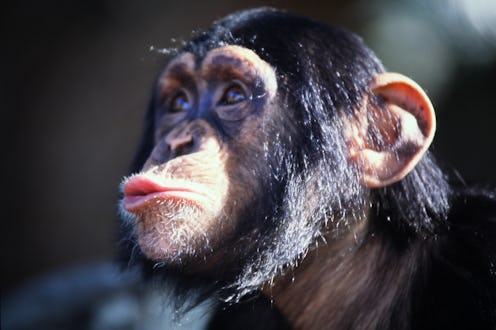Life
Myths About Animals You Probably Believe

It's been a long week. So let's occupy ourselves briefly with the animal kingdom, and more specifically our misconceptions about it. Animals seem to collect myths, and not only the legendary kind. We all carry around perspectives about feathered, furred, and other friends that happen to be based on bad science, old wives' tales, or just plain misinterpreted data, and discovering our errors can be somewhat of a shock.
The source of myths and misinterpretations about animals can be as interesting to track as the truth. Some come from translation errors, others from misunderstandings of the natural world: barnacles, for instance, were thought by medieval naturalists to "hatch" into barnacle geese, because nobody had observed how those geese procreated and barnacles seemed like the best option. And we're revising our knowledge of animals and their lives every day, so don't get cocky about the perfection of modern science. It's only recently been discovered, for instance, that bowhead whales in the Arctic can live for up to 200 years. Doubtless future generations will look back at our beliefs about certain mammals and scoff at our ignorance.
Without further ado, here are some myths about animals you probably believe, busted once and for all.
"Goldfish Have A 3-Second Memory"
The whole "goldfish have a three-second memory" myth has been repeatedly debunked by a series of memory experiments performed on goldfish, with some reports giving them memories of as much as a year. The classic experiment, which is now often repeated by grade-schoolers with an interest in the fishy side of science, is to train goldfish to locate food at certain points in a maze (or to identify how to get through it using colored doors), and then to see whether they retain the information months afterwards. The result is pretty uniform: after six months, goldfish continue to remember where they can find their food.
Other experiments, however, have been less food-centric. It's been shown that goldfish recognize and remember humans who are involved in their feeding, adapt to and learn routines, and in one specific experiment retained the ability to associate a particular noise with feeding time even after being released into the wild for six months. This makes perfect evolutionary sense, as there would be basically no survival possibility for an animal too stupid to remember past a minute of its life.
"Bonobos Are Basically Chilled-Out Hippies"
Bonobos, or pygmy chimpanzees, came to prominence with numerous studies, particularly those featured in the bestselling Sex At Dawn, highlighting their polyamorous highly-sexed ways, and hypothesizing that they were a better model for natural human sexual behavior than monogamy. The jury's still out on that one, but the reputation of bonobos as chilled-out charmers with large amounts of bonding via sex isn't entirely deserved.
Despite the fact that their society uses sex rather than violence to sort out territorial and hierarchical disputes, they're not all peace and love. Research in 2008 found that bonobos are carnivorous, and can prey on the meat of vulnerable monkeys of other species. While their own behavior to their species isn't aggressive (they tend to form all-female groups to protect everybody from violence), they can certainly bring out the talons when needed to suppress prey.
"Bald Eagles Are Somewhat Bald On Top"
Perhaps this is just a misconception for non-Americans furthered by the eagle on the Muppets, but it certainly seems as if bald eagles seem to have a reputation for baldness of some kind or another. As it happens, they have nothing of the kind, but why they're known as "bald" is unclear. Bald eagles may be more correctly known as piebald eagles, referring to their two-colored plumage. However, some people argue that "bald," in this context, refers to an animal with a white head, as the etymology of the word bald comes from the Middle English ballede, meaning a white patch or blaze on the head of a horse or some other animal. Bald coots and bald-faced stags also have the same problem with their name's origins.
"Bees Don't Talk"
Most of us know that bees communicate with one another using complicated "dances" through which they tell other members of their hive the location of potential pollen, but until this year it's been thought that's the limit of how they talk to one another. Not so. And it's now how you might think.
Bees do not communicate via buzzing noises. Their buzzing capacity is usually a product of bodily vibration to try and shake pollen off flowers to collect it, or else have to do with their wingbeats and how we hear them. Bees themselves don't interpret that as communication at all. What they do make, however, is a strange "whoop whoop" noise. Yep, you read that right. We've known about the whooping of the bees, which is inaudible to humans, for a while, but we had no idea why on earth they did it until a new experiment released in 2017. It turns out they whoop when they're startled: when they bump into another bee, for instance, or if the hive is shaken. It may be a signal of distress, or a warning to bees around them. It's not known quite yet, but it's very cute.